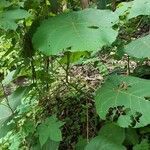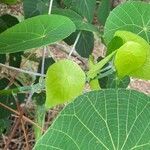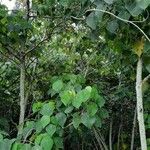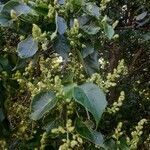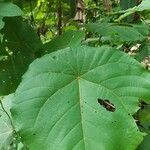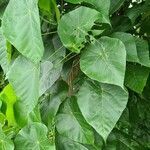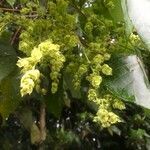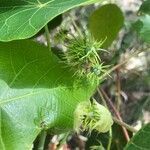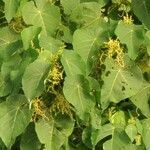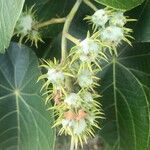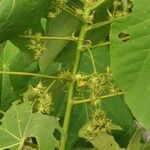A small tree. It grows 4-10 m high. It has a spreading bushy habit. Young growth is bright green and slightly hairy. The leaves are alternate and 10 to 25 cm long by 10-15 cm wide. They are broadly oval or shield shaped. The leaf stalk joins the leaf blade in the centre. The leaf stalk is slender and 20 cm long. The leaf is bright green above and pale green underneath. The veins are pale and easy to see. The flower panicles are 4-22 cm long and in the axils of leaves. They hang downwards. The male flowers are longer and more branched. There are broad bracts near the flowers and these have fringes around them. Both male and female flowers are small and green. The fruit is a capsule 0.8 cm long and inflated. They are soft and have teeth around them. The seeds are black and shiny when ripe.
